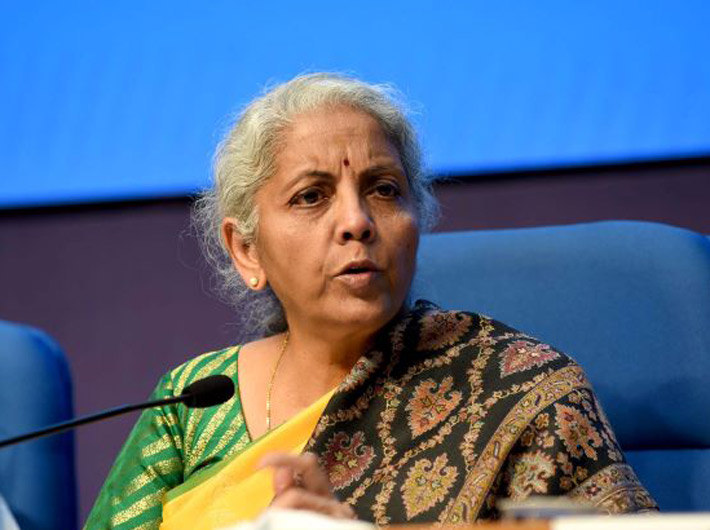Ahead of general elections, it will be the key opportunity for govt to review the economic situation
Finance minister Nirmala Sitharaman will be presenting the Budget for FY2024-25 on February 1, 2024. Since this is an election year, the finance minister will table a “vote-on account” through an interim budget, while the task of presenting the full budget for FY25 shall be of the new government after the general elections.
The last interim budget, presented by the interim finance minister, Piyush Goyal, had a lot of offers to the citizens. Driven by populist measures, freebies were announced ranging from tax reliefs to support schemes for farmers. The budget had also summarised the initiations taken and milestones achieved by the then ruling government highlighting their efforts in governing the nation. The upcoming general elections offer similar opportunities to the finance minister. However, economists say that this budget would be focused on fixing the nicks and cracks of the economy without making any spectacular announcement. Probable reasons could be the upcoming general elections, when the government should not be making big announcements to influence voter sentiments. Moreover, renewed confidence from the recent victories in the three state elections by the BJP might stimulate focus on fiscal prudence rather than increasing expenditure outlays with new promises.
The Narendra Modi government is targeting to reduce fiscal deficit to around 4.5 percent of GDP by FY26, with an optimistic expectation of achieving 5.9 percent of GDP by FY 2024. However, the global macroeconomic environment induced by slowdown in global economic growth, geopolitical risk emerging from different corners of the world, supply chain bottlenecks and inflationary concerns continue to pose major challenges to the Indian growth story. Yet, RBI governor Shaktikanta Das is of the opinion that India is well placed to handle all these challenges, emphasising that the future monetary policy would be contractionary to mitigate any deflationary concern. At the domestic level, rural sector investment is a pressing issue. Moreover, the quality of jobs and accessibility to employment has worsened. Climate change and geo-political risks continue to put pressure on the national economy.
Expectations from the budget
Push to rural investment
The revival of rural economy may be the major focus of the interim budget. In the present scenario, the rural economy is staggering because of agricultural shortfall due to the El Nino effect. Further, higher input cost and rising inflation also pushed down rural consumption. When looked from the perspective of the FMCG sector, at present, the rural consumption demand is looming around 20 percent lower than usual as per Dhairyashil Patil, president of All India Consumer Products Distributors Federation (AICPDF). Proposed measures can be import restrictions on agricultural products and fertilizer subsidies.
Creation of jobs and expansion of PLI schemes
The government may consider allocating more funds to the MGNREGS to enhance poverty alleviation in rural areas and increase rural consumption. To improve the unemployment status the government may also consider announcing productivity-linked incentive (PLI) schemes to more sectors, such as handicrafts, garments and leather industries. The PLI scheme may also be extended to gems and jewelry and the chemicals sector to ramp up merchandise export. The policy can help the industries in financing, skill development and marketing to make India the manufacturer to the world.
Tackling climate risks
Further to meet the COP28 target, the government may consider investing in green hydrogen and other renewable energy technology. A fill-up can be provided to the electric two-wheeler industry under the FAME (Faster Adoption and Manufacturing of Hybrid and Electric Vehicles) scheme to bring out affordability through EV tax exemption extended in 2024 and beyond.
Housing schemes
The other expectation from the budget is an increase in subsidy for housing under the “Housing for all” scheme. Prime minister Narendra Modi launched the scheme in 2015 which provides subsidies from Rs 1 lakh to households that get bank loan for constructing house in addition to the state government subsidies. However, there are 20 million rural households and 1.5 million urban households who still do not have their own house. It is expected that in the upcoming budget the subsidy can be increased to Rs 2 lakh.
Strengthening global positioning
Announcements in the defence sector can also be anticipated as the sector need funds to increased R&D. India’s defence R&D stands at 0.7 percent of GDP which stands incredibly low compared to China. Following the success of G-20 presidency, the government may consider funding the educational and technical institutions in other countries and other collaborative effort to further concretise India’s presence in the global south.Proper support to some of the lagging sectors while maintaining fiscal prudence can be the best strategy for this budget.
The authors are assistant professors, School of Management, Bennett University.
Views are personal and not of the organization they belong to.
